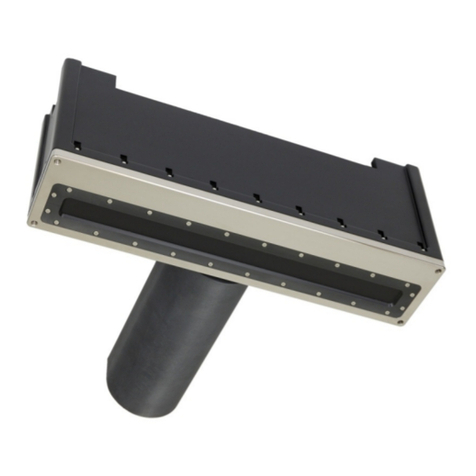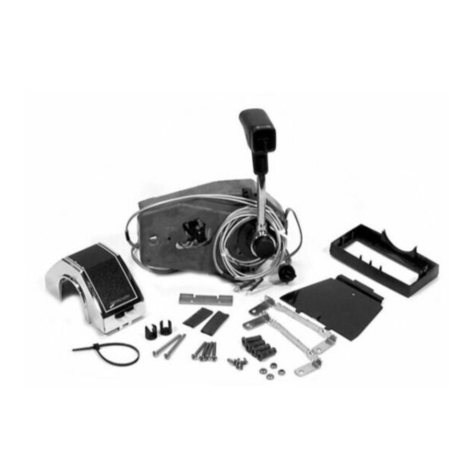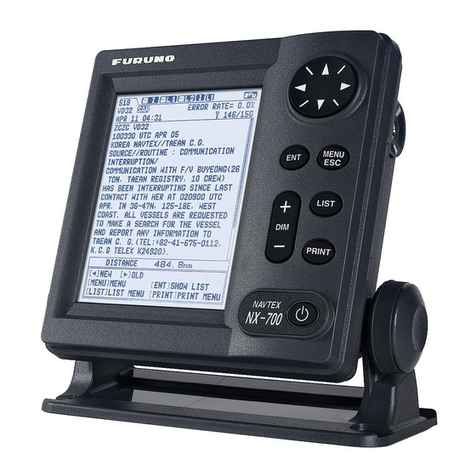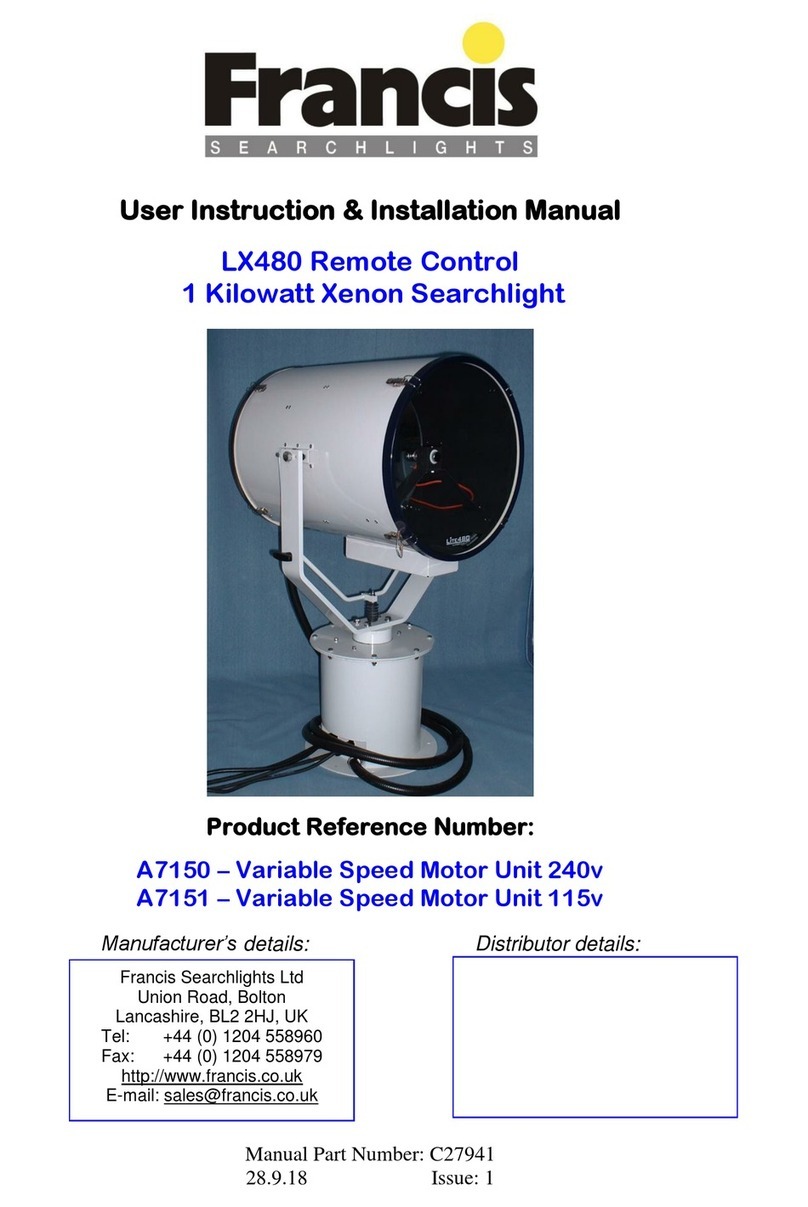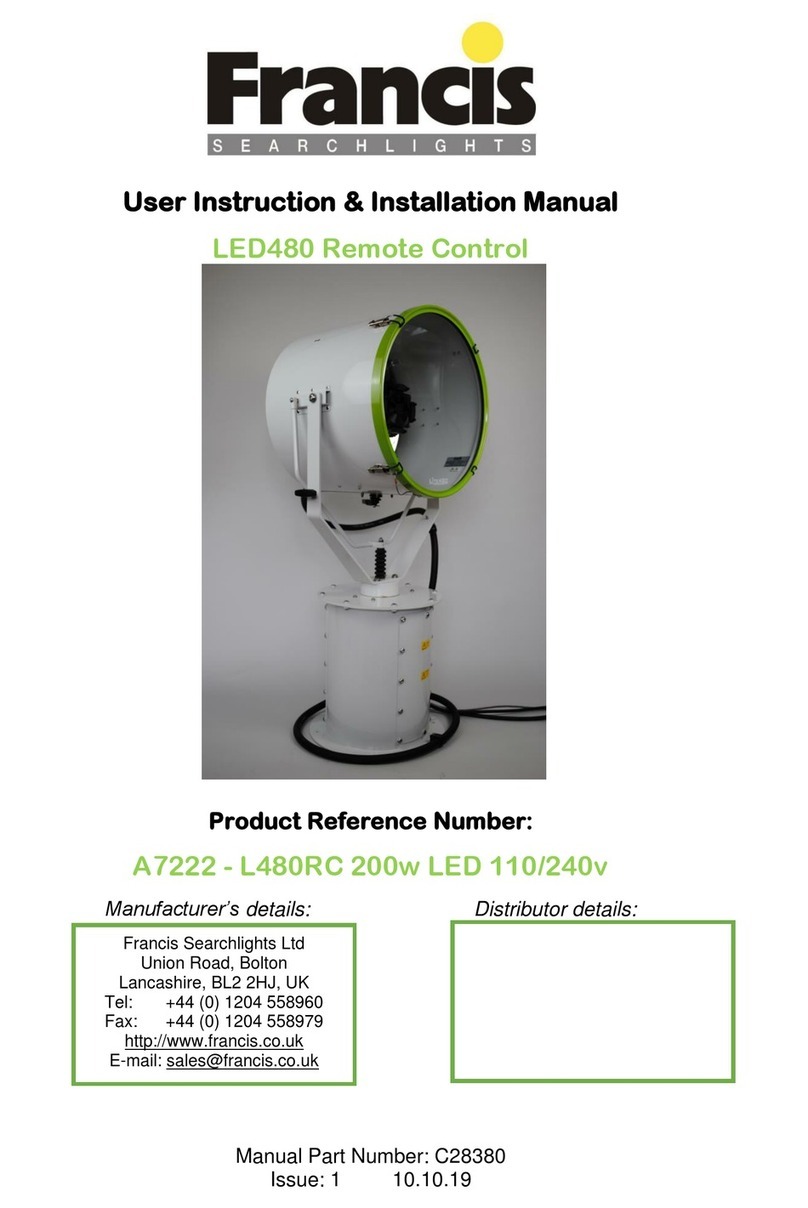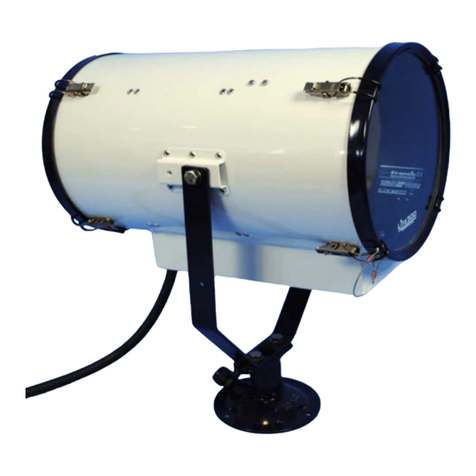1. Switch panel on and drive lamp to desired tilt up limit position.
2. Switch panel off.
3. Press and hold the FOCUS button and hold joystick in the full up position for 4
seconds.
4. Tilt up motion will now be inhibited above the current position.
Clear Motion Limits
Motion limits as set above can be cleared by switching the panel off then pressing and holding
the focus button and lamp buttons together for 10 seconds.
Adjusting Panel Illumination
The panel illumination and indicators intensity can be adjusted to suit ambient light levels. To
adjust the intensity, switch the panel on then switch it off with the PANEL button and keep the
PANEL button pressed. To increase intensity, move the joystick to the right. To decrease move
to the left. Note that the panel button must be kept depressed whilst the joystick is moved. All
indicators will illuminate whilst adjustments are performed. Adjustment is complete when the
panel button is released.
Obtaining Fault Status
Fault codes can be accessed by switching the control panel on with the PANEL button and
keeping the PANEL button pressed for 10 seconds. Fault codes are indicated by the PANEL
button flashing a number of times related to the fault. Fault codes are detailed below. If more
than one fault is present the PANEL button will indicate them in sequence.
1. Pan Limit. –Either of the pan limit switches operated. Note that this
may not actually be a fault. The LED will flash when a limit switch is
operated under normal circumstances i.e., the lamp is at the limit of
travel. This will also indicate when a variable limit is reached.
2. Tilt Limit. –Either of the tilt limit switches operated. Note that this may
not actually be a fault. The LED will flash when a limit switch is
operated under normal circumstances i.e., the lamp is at the limit of
travel. This will also indicate when a variable limit is reached.
3. Pan motor over current. –The pan motor is taking excessive current.
The motor will be disabled for a period when this occurs. Fault
indication will remain until power is removed or the fault is corrected.
4. Tilt motor over current. –The tilt motor is taking excessive current. The
motor will be disabled for a period when this occurs. Fault indication
will remain until power is removed or the fault is corrected.
5. Focus motor over current. –The focus motor is taking excessive
current. The motor will be disabled for a period when this occurs. Fault
indication will remain until power is removed or the fault is corrected.



